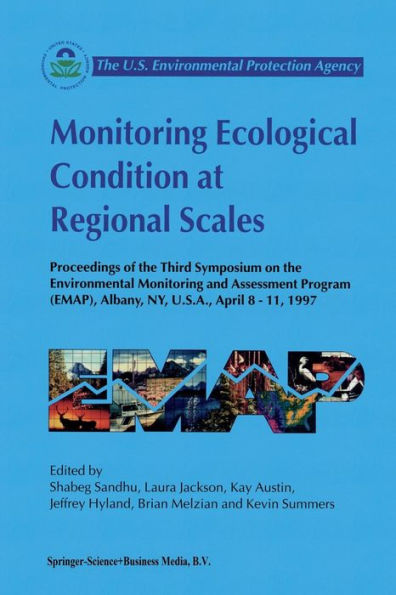Table of Contents
Preface; G. Veith. Environmental Monitoring and Research Initiative: A Priority Activity for the Committee on Environmental and Natural Resources; D. Pryor, et al. Environmental Data in Decision Making in EPA Regional Offices; S.L. Laskowski, F.W. Kutz. Development and Validation of Ecological Indicators: An ORD Approach; W.S. Fisher. A Zooplankton-N:P-Ratio Indicator for Lakes; R.S. Stemberger, E.K. Miller. Implications of Seasonal and Regional Abundance Patterns of Daphnia on Surface Water Monitoring and Assessment; F.B. Taub, C.D. Wiseman. The Role of Biological Indicators in a State Water Quality Management Process; C.O. Yoder, E.T. Rankin. Maryland Biological Stream Survey: Development of a Fish Index of Biotic Integrity; N. Roth, et al. Diatom Indicators of Stream and Wetland Stressors in a Risk Management Framework; R.J. Stevenson. The Occurrence and Impact of Sedimentation in Central Pennsylvania Wetlands; D.H. Wardrop, R.P. Brooks. Towards a Regional Index of Biological Integrity: The Example of Forested Riparian Ecosystems; R.P. Brooks, et al. A Bird Community Index of Biotic Integrity for the Mid-Atlantic Highlands; T.J. O'Connell, et al. Acid Runoff Caused Fish Loss as an Early Warning of Forest Decline; W.E. Sharpe, M.C. Demchik. Forest Integrity at Anthropogenic Edges: Air Pollution Disrupts Bioindicators; M.G. Glenn, et al. Common Patterns of Ecosystem Breakdown under Stress; D.J. Rapport, et al. Vegetation, Soil, and Animal Indicators of Rangeland Health; W.G. Whitford, et al. Monitoring Changes in Stressed Ecosystems Using Spatial Patterns of Ant Communities; M.S. Nash, et al. Parasites of Fish as Indicators of Environmental Stress; J.H. Landsberg, et al. Relating Benthic Infaunal Community Structure to Environmental Variables in Estuaries Using Nonmetric Multidimensional Scaling and Similarity Analysis; G. McRae, et al. Seed Clam Growth: An Alternative Sediment Bioassay Developed During EMAP in the Carolinian Province; A.H. Ringwood, C.J. Keppler. Benthic Biological Processes and EH as a Basis for a Benthic Index; W.R. Davis, et al. State of the Estuaries in the Mid-Atlantic Region of the United States; J.F. Paul, et al. A Framework for a Delaware Inland Bays Environmental Classification; K.S. Price. Maryland Biological Stream Survey: A State Agency Program to Assess the Impact of Anthropogenic Stresses on Stream Habitat Quality and Biota; R. Klauda, et al. Assessment of the Condition of Agricultural Lands in Five Mid-Atlantic States; A.S. Hellkamp, et al. An Interactive, Spatial Inventory of Environmental Data in the Mid-Atlantic Region; L.E. Jackson, M.P. Gant. Sediment Quality of Estuaries in the Southeastern U.S.; J.L. Hyland, et al. Evaluation of R- EMAP Techniques for the Measurement of Ecological Integrity of Streams in Washington State's Coast Range Ecoregion; J. White, G. Merritt. Site Access and Sample Frame Issues for R-EMAP Central Valley, California, Stream Assessment; R.K. Hall, et al. Linking Monitoring and Effects Research: EMAP's Intensive Site Network Program; J.K. Summers, K.E. Tonnessen. Determining the Causes of Benthic Condition; V.D. Engle, J.K. Summers. A Regional Analysis of Lake Acidification Trends for the Northeastern U.S., 1982-1994; J.L. Stoddard, et al. Regional Land Cover Characterization Using Landsat Thematic Mapper Data and Ancillary Data Sources; J.E. Vogelmann, et al. Managing Scientific Data: The EMAP Approach; S.S. Hale, et al. Exploring Environmental Data in a Highly Imme



